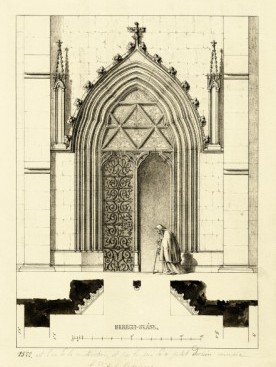The Roman Catholic Church –BerehoveThis religious building is outstanding in what regards Kárpátalja (Subcarpathia) and, hence, reflects the importance of the town. Berehove was founded before 1100, and the Hungarian king conferred upon the settlement important privileges in 1247. Its church dedicated to All Saints was mentioned for the first time in this letter of privilege issued by king Béla IV. The medieval parish priests of Beregszász often became bishops, too. By the Reformation there were twenty-four altars in the church. The Saint Michael’s Chapel, demolished in 1846, stood next to the church. In 1565, the Calvinists took the parish church away from the Catholics. However, the building was destroyed later several times by fire and was not rebuilt after the massive fire of 1686. It had no roof until 1837, nevertheless, in this year restoration works according to plans made by Albin Tischler commenced. The church was rebuilt by 1846. It stands on the right banks of the small river Vérke and impresses already with its size. The sanctuary is roughly 19 to 20 metres long and 8.5 metres wide, while the nave measures 24.5 x 18 metres on the inside. The sanctuary is covered by a triple-cell vault and is enclosed by five sides of an octagon. A sacristy covered by a double-cell vault is connected to its northern wall. Besides the nave, the church has two aisles as well; quadruple-cell vaults cover these elements. A square-based tower with massive walls is located on the western front. A rectangular chapel was added to the western section of its southern wall. The windows of the sanctuary are double lancet windows decorated with traceries. A lattice vault constructed in the 19th century covers the sanctuary and a sedilia is located below the eastern window of its southern wall. Inside the sanctuary, in the western section of the northern wall, one can see a very large portal. According to oral tradition, it was brought here from the ruined church in Kismuzsaly; nonetheless, it is more probable that the western portal of the previous Saint Michael’s Chapel was transferred here. The main view of the church is the southern frontispiece, which is ornamented with a special architectural element: the main portal of the church. It is divided into two parts, canopies support the lintel and the frame is beautifully articulated. The date 1522 was inscribed above the trumeau. The space of the nave and the aisles is subdivided into bays. Canopies project from the surrounding walls in the places corresponding to piers and columns. All cell vaults are rib vaults constructed in the 19th century. The 19th century reconstruction mimicking Gothic architecture determines the church’s present form and outlook. The oldest part of the church is, probably, the tower; or more precisely, its lower part. The nave and the aisles stems, arguably, form the second quarter of the 15th century. The monumental southern portal is a later addition. The date 1504 visible on the eastern window of the sanctuary’s southern wall alludes, presumably, to the period when the latter part was built. The fact that this building is the most influential religious edifice in the entire historical and geographical region is shown by various architectural forms of the churches in Kismuzsaly, Nagymuzsaly, Akli, Beregsurány and Beregdaróc, which are copies of similar elements of this church. |

















